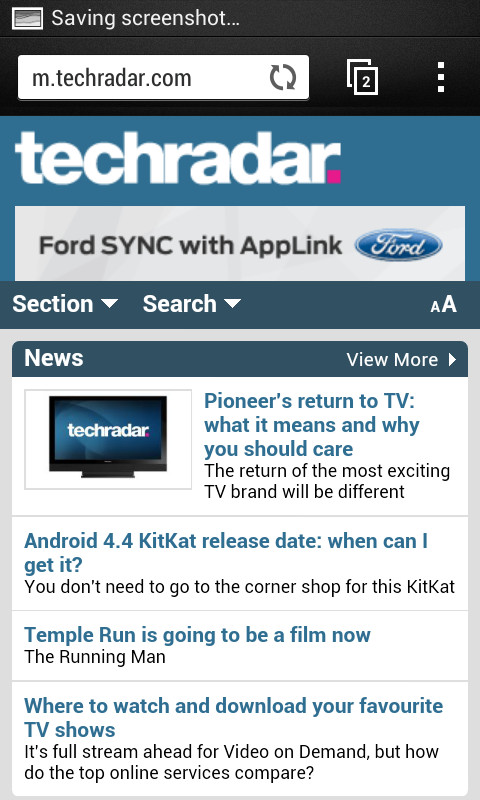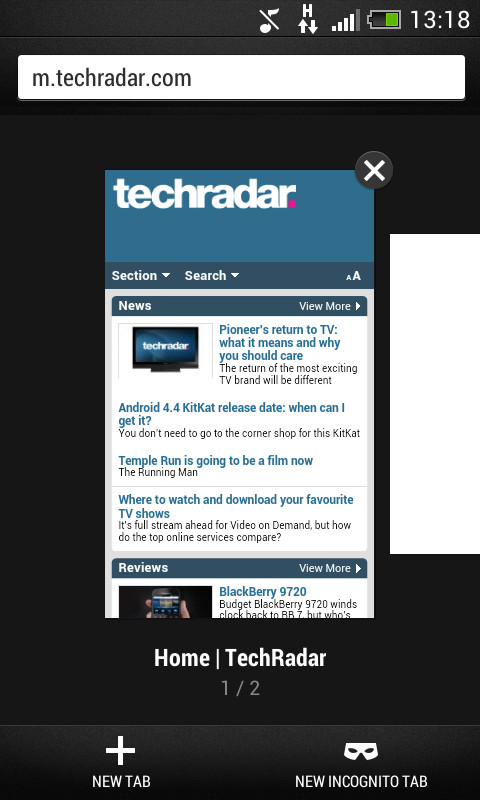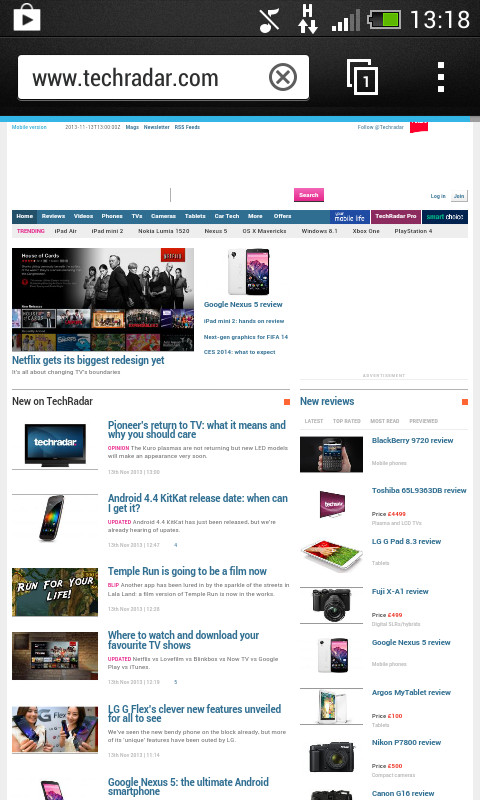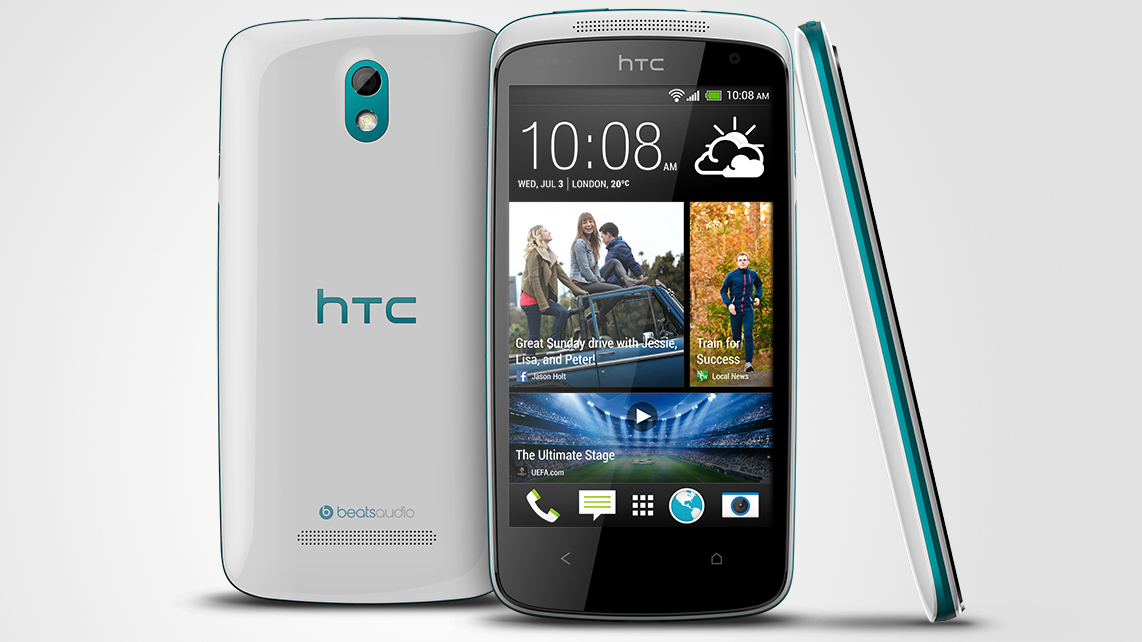Why you can trust TechRadar
The HTC Desire 500 is like most Android Jelly Bean devices for browsing the internet, in the way that it comes with both Google Chrome and a HTC customised browser.

Which browser you choose is going to rely a lot upon your own preferences, but we have to say that HTC has provided a lot of customisation to its browser that makes it a very decent rival to Chrome.
Before we go any further, however, we will give a quick nod to the screen. Whilst perfectly capable, the lower resolution does mean that web pages don't seem to have the same gloss as HD smartphones like the HTC One Mini do.
When it comes to choosing the browser on the HTC Desire 500, we have to mention just how useful the Google Chrome browser is, especially if you're one of the many that uses the Google Chrome desktop program.
It syncs across your tabs, your bookmarks and your history. This makes it very easy to move between desktop and mobile, and to any other Android or iOS devices that you have Chrome installed upon.
The native HTC browser is fast, though. The quad-core insides helped everything tick over very nicely. We were never going to see the same levels of speed that flagship phones produce, but we were never left waiting.

The HTC app also comes with something that many people will consider invaluable, despite the best efforts of Apple and Adobe; a Flash player. This can be enabled in the settings menu, allowing you to view all manner of mobile videos.
Alongside Chrome, you can also open a variety of tabs. Navigating between these might not be as easy as in Chrome, but it is a big step up from before.
The URL bar has also had a look at, as it now disappears to give you the whole screen to play with. Moving upwards will bring the bar back, although this disappears if you don't select it. We were also very pleased to see a '.com' button appear on the keyboard.
We did find throughout our tests that the URL bar didn't always reappear. This might be because we had the Quick Gestures turned on, we're not entirely sure.
Within the menu, you can also navigate to the Labs section. This allows you to load up a clever gesture based system, which is operated by sliding your thumb in from the left or right hand side of the screen.

Our only real criticism of it is that we found we were often a little too quick. It takes a certain level of precision, but we got the hang of it quickly. Rather than swiping in, it is a lot easier to just press and hold the side of the screen.
Bookmarks are also well handled, if not as well as in Chrome. HTC's browser will allow you it sign into your Google account, and then will port over all the bookmarks that you have associated with it.
These come in an attractive list, populated with little thumbnails of the page if you use them regularly.
Other than that, there is not a whole lot that we can say about the HTC browser. It offers a large amount of built in functionality and is more than adequate replacement for the Google Chrome offering.
Don't forget, HTC is also the king of automatic text reflow. You can pinch and zoom to your heart's content, and the HTC Desire 500 will redraw web pages making it easier to read.
Obviously everybody will have their own opinion on this, so it is definitely worth giving Chrome a try, but we really don't see why you'd need to.
